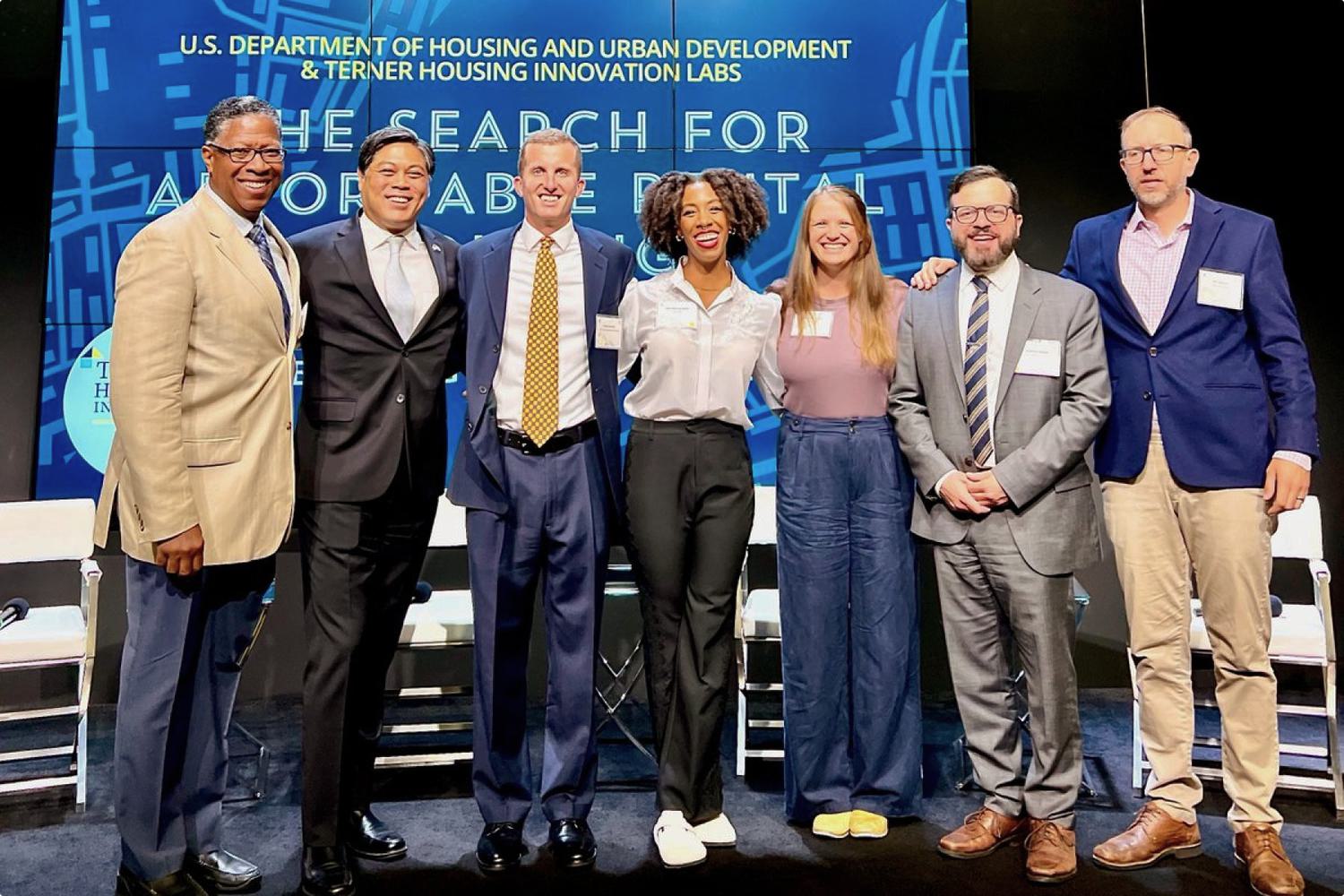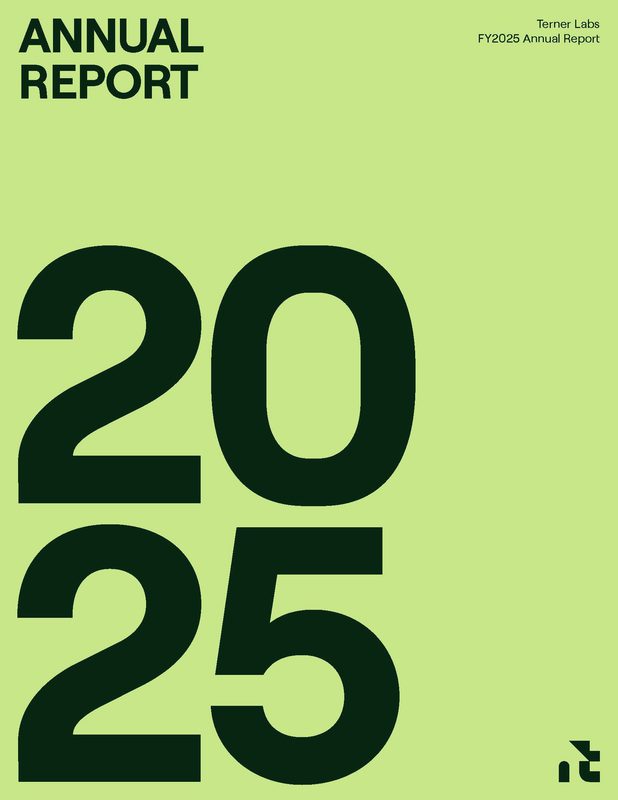Takeaways from "The Search for Affordable Rental Housing"

Watch the symposium here. For a full summary of all panelists and the timing of each panel, scroll to the bottom of this post.
Housing Technology in the Rental Market
September 25, 2023 marked the inaugural event in the Housing Technology Series co-hosted by Terner Labs and the US Department for Housing and Urban Development (HUD). The webinar titled “The Search for Affordable Housing” focused on the impact of new technology on prospective renters’ ability to find and access affordable housing
Solomon Greene’s opening remarks emphasized that technology plays an increasingly vital role in the housing search for over 44 million renters in the United States. He noted, “Technology is transforming all aspects of the housing market and the way people find finance and keep affordable housing."
Technology in the Subsidized Housing Process and Fighting Homelessness
Christi Economy introduced the first discussion by giving context of the government-subsidized ecosystem. She listed the three largest barriers to low-income people accessing rental housing as (1) locating units, (2) discrimination, and (3) administrative burdens. She noted that vouchers are a primary way that low-income people are able to pay rent, but that only 32% of voucher-holders are able to find housing after two months and only 61% of voucher-holders are able to find housing after six months.
Eric Shaw highlighted DAHLIA as an example of a centralized platform for affordable housing created to mirror market-rate housing search platforms. The platform not only allows prospective renters to see and learn about the units, but also connects them to the application portal for the unit. In 2017, the platform successfully processed 200,000 applicants through the San Francisco Mayor’s Office of Housing and Community Development, helping people find housing that matches their income, household size, and other preferences.
KC Crosby indicated that platforms such as Pronto can help mitigate the “application fatigue” that people may experience when they learn about a housing vacancy but do not complete all of the steps to secure it. Pronto is the first off-the-shelf affordable housing compliance Software-as-a-Solution (SaaS) platform. A common experience among applicants in New York selected through the affordable housing lottery is the hardship of completing up to 80 pages of complex and redundant paperwork. Pronto simplifies and shortens that process, making it all available on a cell phone, while also making it easier for the organization providing housing to stay compliant with government funding processes.
Janey Rountree discussed how technology can help create homelessness prevention policies, serving various vulnerable communities, such as young people aging out of foster care. Rountree, through her work at CPL, is developing predictive models to assist agencies like the Los Angeles Department of Children and Family Services in identifying youth at high risk of resorting to emergency shelters or transitional housing upon aging out of the foster system. By linking administrative data identifying those at risk of homelessness and distributing information to counties, CPL’s work helped launch a Los Angeles County homelessness prevention unit (HPU) in 2020, connecting those at risk of homelessness with resources.
How Technology Helps (and Can Harm) the Search and Entry Process for Rental Housing
Shazia Manji set the context for the second panel and explained disparities between owners’ uses of technology and tenant screening and selection. She highlighted how individual landlords with few units often use subjective methods to drive tenant selection, potentially exercising bias to screen out applicants but also sometimes renting to tenants that would be declined through more formal processes. Corporate landlords tend to use more formal screening technology to select applicants. Although technology reduces individual bias, it also can reduce the likelihood of selecting Black and brown applicants due to disproportionate eviction rates and interactions with the criminal justice system.
Catherine Bracy suggested that when technology drives the selection process, it can disempower tenants from the decision-making process. "When there's an opportunity for the tenant to make their own case to the landlord and have a face-to-face interaction that isn't intermediated by technology, and when they have some sense of what the landlord is basing their decision on, they're better positioned to sort of make a case for themselves instead of just being judged on a score that is not transparent at all," said Bracy.
Shkëlqim Kelmendi explained that the property technology industry has a long way to go before it can become fully automatic. He suggested that a national source of income protection law could prevent landlords from screening out voucher holders. As a “tech-for-good” non-profit organization, his organization, Housing Connector, increases access to housing for individuals in need by offering financial insurance for housing providers that supports them in accepting renters that may otherwise have been denied through traditional screening processes. Through their partnership with Zillow, Housing Connector’s platform enables people to search for units aligned with their preferences and helps ensure higher acceptance rates. In exchange, Housing Connector provides property managers with rent guarantees, guarantees damage mitigation funds, and mediates behavioral or financial challenges with tenants in partnership with case managers.
Tailoring technology to account for the unique needs of applicants can improve access to housing. For example, many property managers use online systems to collect monthly rent payments, not taking into account the hardship of tenants who receive irregular paychecks. One innovative strategy, noted by Sharon Wilson Géno, is for property managers to adopt a rental insurance plan or a flexible payment plan for tenants in need. Flexible rent payments, such as in weekly or biweekly increments, can make housing more accessible to those who work irregular hours, such as Uber or Lyft drivers, and who may be unable to pay their rent upfront every month.
Looking Ahead
As technology and the housing infrastructure become increasingly intertwined, the panelists stressed the significance of collaboration among local authorities to pinpoint areas that can be streamlined and consolidated. The scarcity of vacant housing units poses challenges for applicants navigating protracted waiting lists and fragmented data systems. While technology can expedite the tenant selection process, the panelists also underscored the necessity for human interaction that can address the needs of tenants that software alone cannot capture. As Murray-Badal noted, "Technology is most effective when it augments a human-centered approach, serving the people within the system rather than the other way around."
Symposium Agenda
Introductions: Solomon Greene, Principal Deputy Assistant Secretary at HUD’s Office of Policy Development and Research (00:00:00)
Opening Remarks: Kara Murray-Badal, Housing Lab Director at Terner Housing Innovation Labs (00:05:25)
Presentation: Contextualizing the Search for Subsidized Housing - Christi Economy, Research Associate at Terner Center for Housing Innovation (00:08:04)
Panel 1: Affordable Housing - The Search Process for Subsidized Housing (00:13:27)
- KC Crosby, Co-Founder and Chief Operating Officer of Pronto Housing
- Eric Shaw, director of the Mayor’s Office of Housing and Community Development for the city and county of San Francisco;
- Janey Rountree, Executive Director of the California Policy Lab (CPL) at the University of California Los Angeles
- Kara Murray-Badal, Housing Lab Director at Terner Housing Innovation Labs (Moderator)
Presentation: Contextualizing the Role Technology Plays in the Search for Rental Housing- Shazia Manji, Research Associate at Terner Center for Housing Innovation (00:43:25)
Panel 2: Market Rate Housing - How Technology can Impact the Search for Rental Housing (00:49:17)
- Catherine Bracy, Founder and Chief Executive Officer of TechEquity Collaborative
- Sharon Wilson Géno, President of the National Multifamily Housing Council
- Shkëlqim Kelmendi, Founder and Executive Director of Housing Connector
- Jason Pu, Regional Administrator for HUD Region IX (Moderator)
Closing remarks (01:24:20)
- Jason Pu, Regional Administrator for HUD Region IX
- Solomon Greene, Principal Deputy Assistant Secretary for Policy Development and Research, HUD
- Kara Murray-Badal, Housing Lab Director, Terner Housing Innovation Labs


